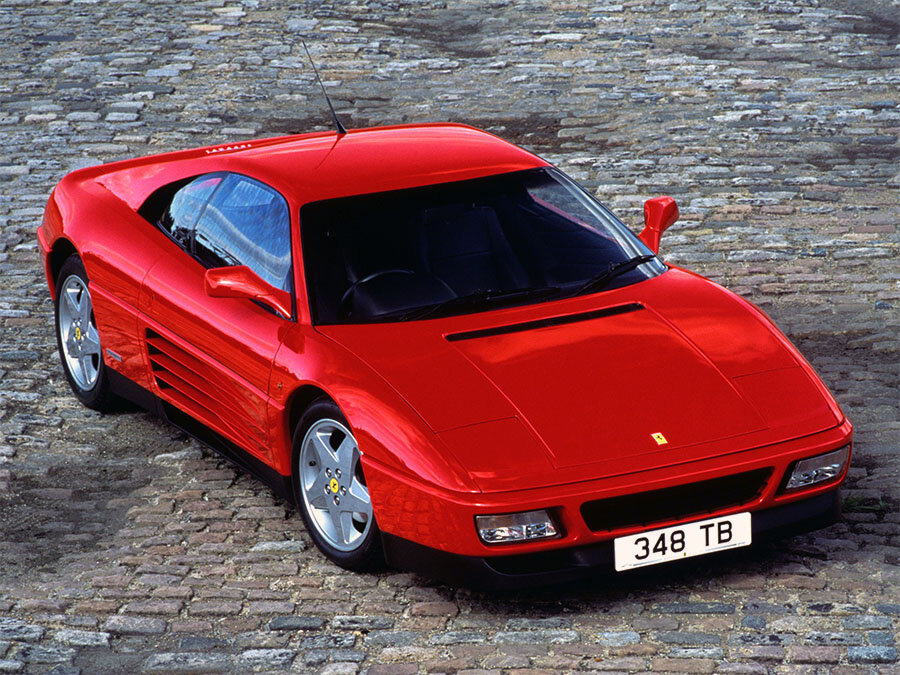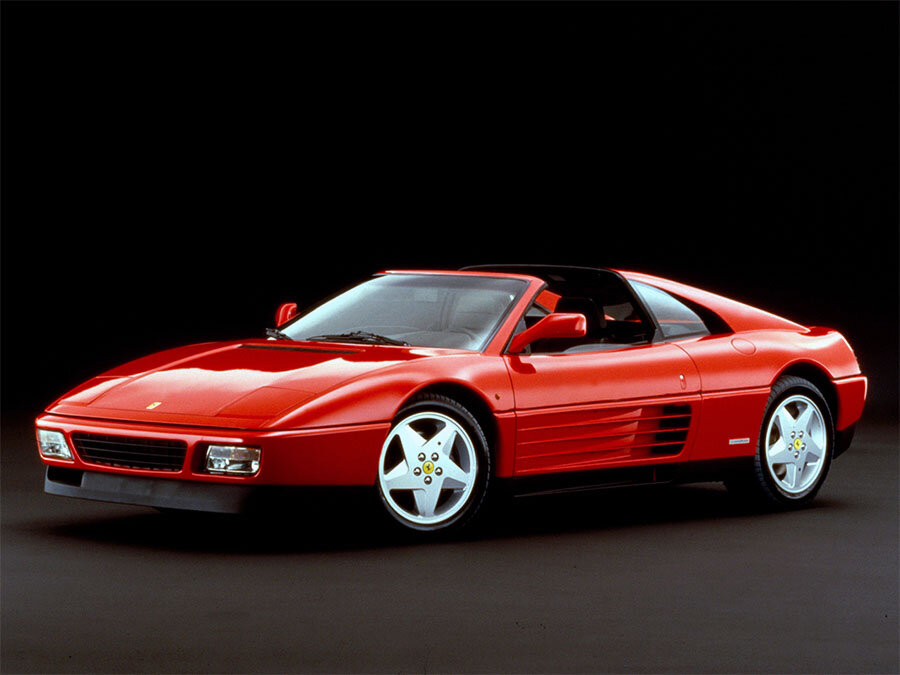Guide: Ferrari 348 tb & 348 ts - a Historical & Technical Appraisal
/BACKGROUND
The addition of a junior model to Ferrari’s range proved an enormous success. When the firm’s twelve cylinder models were locked out of the lucrative US market for much of the 1970s and early 1980s, these less expensive offerings from Maranello arguably kept the company solvent.
The original V6-powered Dino was produced from 1968 until 1974. By the time it was discontinued, the first in a new line of three-litre V8 models had been introduced. To increase sales, these V8 Ferraris were produced in both two and four seat configurations.
By 1989, Ferrari’s entry level models had been around for 21 years. During this time, over 33,000 had been sold.
In 1985, the Pininfarina-bodied 308 was replaced by the facelifted 328 which took over as Ferrari’s most prolific seller. Handsome looks, outstanding performance and excellent build quality ensured the 328 was the best machine in its class.
However, towards the end of the 1980s, the 328 was beginning to show its age; a new generation of European and Japanese competitors had arrived. If Ferrari was to retain pole position for much longer, a clean sheet design would be necessary.
Accordingly, at the Frankfurt Motor Show in September 1989, Ferrari unveiled the brand new 348.
Like its predecessors, the 348 was available as a Berlinetta (tb) or targa-topped Spider (ts).
CHASSIS
Unlike the Dino, 308, 328 and Mondial (which had all used a conventional tubular steel chassis), the 348 featured a pressed steel monocoque assembly.
It was the first road-going Ferrari to incorporate this type of unitary body shell and was designed from the outset to meet worldwide crash regulations; cars bound for markets like the USA would now share an identical platform to those sold in European markets.
Compared to the outgoing 328, the 348 had a wheelbase extended by 110mm to 2450mm. Track dimensions were widened by 17mm at the front and 103mm at the rear.
As per the 3.4-litre Mondial t (which had been launched earlier in 1989), the 348 had a longitudinally positioned engine mated to a transverse gearbox. Previous junior Ferraris had used a transverse engine layout.
The new arrangement enabled Ferrari to position the engine lower in the chassis. It also meant there was no longer any space for luggage at the back of the car. However, by re-locating the water radiators down each flank and fitting a tyre compressor instead of a spare wheel, load capacity underneath the front lid was dramatically increased.
The 348’s engine and gearbox were mounted on a steel subframe which could be dropped out of the car for easy maintenance.
Suspension was independent all round via double wishbones, coil springs and gas-filled Bilstein dampers. Anti-roll bars were installed at either end.
Brakes were ventilated discs and the ABS was controlled by a Teves Mk2 system.
New 17-inch five bolt alloy wheels measured 7.5-inches wide at the front, 9-inches wide at the rear and were shod with either Pirelli or Bridgestone tyres.
A 95-litre fuel tank was located between the engine and passenger compartment.
ENGINE / TRANSMISSION
The Tipo F119D engine was the same 3.4-litre V8 introduced on the Mondial t at the Geneva Motor Show in March 1989. This in turn was a development of the 90° V8 used by the 308 and 328.
As usual, the block and four valve DOHC heads were fabricated from light alloy. New equipment included Nikasil-coated cylinder liners and dry-sump lubrication.
Bore and stroke had both been increased compared to the outgoing 3.2-litre engine. Bore was taken from 83mm to 85mm and stroke was extended from 73.6mm to 75mm. This gave an overall displacement of 3405cc which represented a 220cc gain over the Ferrari 328.
Compression was upped from 9.8:1 to 10.4:1.
Bosch Motronic M2.5 replaced the old K-Jetronic system.
Peak output was 300bhp at 7200rpm and 238lb-ft at 4200rpm. This compared favourably to the previous model which produced 270bhp at 7000rpm and 224lb-ft at 5500rpm.
The gearbox was a new five speed unit mounted transversely hence the lower case ‘t’ in ‘tb’ and ‘ts’. A twin-plate clutch and limited-slip differential were installed.
BODYWORK
Cosmetically, the Pininfarina-designed 348 resembled a baby Testarossa albeit with softer edges and better proportions. Like its predecessors, the 348 was arguably the best looking junior supercar of its era.
Steel panels were used throughout except for the bonnet and engine cover (aluminium) and the bumpers and sills (fibreglass).
The 348 ts had a removable moulded plastic roof panel which was given a vinyl finish and could be stowed behind the seats.
Although the radiators were fed by massive slatted air intakes carved out from each flank, Pininfarina added a dummy grille at the front of the car to bring the 348 in line with the rest of the range.
Retractable headlights with new rectangular lenses were fitted.
By leaving the side skirts and aprons matt black, Pininfarina gave the 348 a lovely slender profile.
The slatted theme continued on the engine cover and tail fascia. At the back, rectangular light assemblies were concealed behind a matt black grille in a similar fashion to the Testarossa.
Brightwork was practically non-existent and even the prancing horse logos affixed to either end were matt black.
Body coloured wing mirrors were mounted on extended stalks.
To improve airflow, the door release catches were mounted flush with the rest of the panels.
INTERIOR
The 348’s interior was also completely new whereas the transition from 308 to 328 had been a comparatively simple revamp.
Leather upholstery was standard. Connolly hide covered the seats, door panels, instrument binnacle, lower dash, centre console, transmission tunnel and upper rear bulkhead panel.
The upper dash was black vinyl, the headliner was cloth and the rest of the cockpit was carpeted.
The main instrument binnacle housed a 300kmh or 200mph speedo and a 10,000rpm rev counter. In between were smaller gauges for oil pressure and water temperature stacked one above the other. Additional read outs for oil temperature and fuel were located on the centre console.
All instrumentation was orange on black.
A three-spoke steering wheel came with a black leather rim. The handbrake was located to the outside of driver’s seat.
The well bolstered seats were manually adjustable and a traditional open gate gear shift was employed.
Standard equipment included air-conditioning, electric windows and electric mirrors. The wing mirrors also had a heated element that was activated when the heated rear window was turned on.
OPTIONS
Optional extras were limited to metallic paint and Schedoni fitted luggage.
WEIGHT / PERFORMANCE
The 348 tb weighed in at 1393kg and the 348 ts was 5kg heavier.
Top speed of both variants was 171mph and 0-62mph took 5.5 seconds.
USA VERSION
348s destined for the USA, Switzerland, Austria and Sweden came with catalytic converters.
US variants were also fitted with an evaporative emission control system and weighed 85kg more than their European counterparts.
PRODUCTION CHANGES
From chassis 84606 (produced in late 1990), Ferrari dropped the Motronic M2.5 in favour of the updated M2.7 system. At this point, catalytic converters were ushered in for Euro market cars.
Thereafter, only minor changes were made.
They included a Nippon Denso instead of Bosch starter motor (from May 1991) and a single instead of twin-plate clutch (from October 1991).
In late 1992, the battery was moved from the back of the car to the front.
348 SERIE SPECIALE
By mid 1992, the market for high end cars was very different to when the 348 had been launched. A worldwide recession resulted in a slump in demand and many firms were still trying to sell new cars that had been over produced during the boom years.
To try and stimulate sales in the USA, a limited edition 348 Serie Speciale was produced between late 1992 and early 1993.
100 were built (33 tb and 67 ts), all of which featured leather-covered two-piece Kevlar sports seats from the US-spec. F40, a deep front spoiler, body coloured aprons, exposed tail lights, chrome prancing horse badges, widened rear track and a sports exhaust that liberated an additional 10bhp.
348 MARANELLO SPECIALE
UK Ferrari distributor, Maranello Concessionaires, also offered their own factory authorised special edition.
The 348 Maranello Speciale came with body coloured aprons, a deep front spoiler, drilled aluminium pedals, a Challenge steering wheel and sports exhaust system.
Only four were made.
END OF PRODUCTION
At the Frankfurt Motor Show in September 1993, Ferrari launched the updated 348 GTB and 348 GTS which came with all the improvements introduced on the 348 Spider which had itself been unveiled on Rodeo Drive that February.
By this time, 7125 first series 348s had been completed.
This figured comprised 2895 in tb configuration (130 of which were right-hand drive) and 4230 in ts configuration (of which 261 were right-hand drive).
Text copyright: Supercar Nostalgia
Photo copyright: Ferrari - https://www.ferrari.com


































